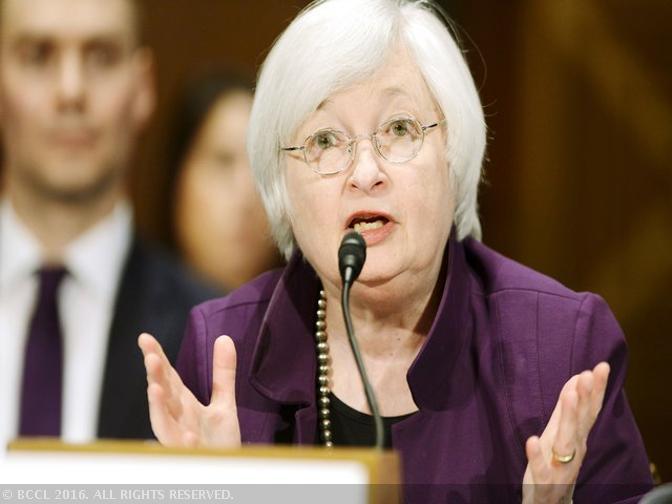Prospects for tighter monetary policy in Europe and other countries could pose a fresh problem for the Federal Reserve when it meets next week to ponder its plan to reduce its $4.2 trillion bond portfolio purchased after the 2008 financial crisis.
The Fed bought U.S. Treasuries and mortgage-backed securities (MBS) for about six years in a program known as “quantitative easing” which kept interest rates at record lows to spur borrowing and economic recovery.
But at its June meeting this year, as well as raising interest rates for the third time in six months, the Fed also announced a plan to begin by letting $6 billion a month in Treasuries mature without reinvestment and to increase that amount at three month intervals up to $30 billion.
Similarly, the Fed said it would run down its agency debt and mortgage backed securities by $4 billion a month until it reaches $20 billion.
Now, the European Central Bank (ECB) also appears likely to decide later this year on when to scale back its monthly bond purchases. When ECB President Mario Draghi first hinted at the prospect last month, world bond yields rose sharply for a while.
Moreover, Canada’s central bank raised interest rates for the first time in seven years this month, and the Bank of England is expected to raise rates next year to combat rising inflation.
Global turning point in monetary policy ?
The Fed led the way in tightening monetary policy as the global economy recovered from the 2008 recession but must now determine how plans by other central banks’ plans may affect their own policy.
While a stronger European economy has been welcomed by the Fed, lessening risks to the global economy, a move by major central banks to all tighten monetary policy simultaneously has not been seen for a decade.
“The effects of ECB tapering are not limited” to euro zone countries, Cornerstone analyst Roberto Perli wrote recently.
Draghi’s comments in June drove up 10-year Treasury yields US10YT=RR by the most since the U.S. election last November, and a move by the ECB to stop printing money could prompt the Fed to slow its plans for fear that financial conditions would tighten too fast.
When Fed policymakers meet on July 25-26 they will need to decide a start date for reducing their bond holdings or leave more time to evaluate what Fed Governor Lael Brainard recently cited as a possible “turning point” in global monetary policy that may affect economic growth.
The Fed’s plan to reduce its portfolio may well push up longer term bond yields, driving up long term borrowing rates for business, and lead to higher mortgage rates for the housing industry.
Analysts have made comparisons to the so-called “taper tantrum” in 2013 when world bond yields jumped after the first signal from the Fed that it might tighten policy.
“Just how sturdy is this recovery in the face of rising long rates? I would be a little more nervous about that,” said former Fed research director David Stockton, now a senior fellow at the Peterson Institute for International Economics. “I would not feel any urgency” to reduce the balance sheet for now.
Hurdles ahead for Fed
Fed officials have said they think the balance sheet reductions should begin soon, and analysts have pinpointed September as the likely month the Fed will stop reinvesting the proceeds it receives as securities mature.
But the minutes of the Fed’s June meeting indicated a split between officials ready to start balance sheet reductions in “a couple of months” and those wanting to wait for more economic data.
Since then the number of hurdles for the Fed to jump before tightening policy further has multiplied.
Global long-term bond yields jumped after the ECB indicated it may begin tightening policy last month and may rise again.
Annual U.S. consumer price inflation increased by 1.6 percent in June, the smallest rise since October last year, and year-on-year inflation has been declining since February when it hit 2.7 percent, reducing the need for the Fed to tighten.
And the prospect of the U.S. Congress failing to raise the federal debt ceiling before the Treasury runs out of cash in October has already driven up yields on three-month Treasury bills US3MT=RR due to mature on Oct. 19 to 1.17 percent on Friday, near the highest levels since October 2008.
As a result of the chances of a third rise in the Fed funds rate, this year recently fell below 50 percent, according to CME Group’s FedWatch.
Complicating matters more, each central bank has two policy tools in play – a target interest rate, and a massive balance sheet accumulated. Between them, the Fed and ECB own roughly $9 trillion of assets.
Fed Governor Brainard has already pointed out how hard it may be to sort out what it will mean if the ECB starts to scale back its bond purchases at the same time the Fed is both raising short-term interest rates and shrinking its balance sheet.
“I will want to monitor inflation developments carefully, and to move cautiously on further increases in the federal funds rate, so as to help guide inflation back up around our symmetric target,” Brainard said.








